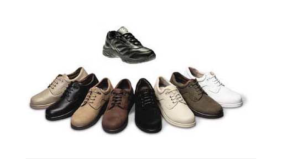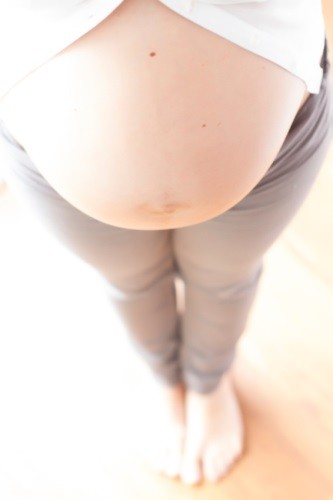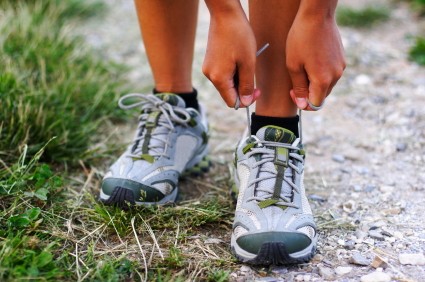Featured Articles
Items filtered by date: November 2014
Boys & Girls Club Members receive New Shoes thanks to Samaritan’s Feet
 The successful Samaritan’s Feet event, held by Samaritan’s Feet International and Northeastern Indiana Credit Union Chapter (NEICUC), was able to put new pairs of shoes onto three hundred members of the Boys & Girls Club of Fort Wayne and the Euell A. Wilson Center. To help spread and share hope among local children, the event also had the members’ feet washed by volunteers. Samaritan’s Feet’s leaders believe it is possible to show to the youth that they can reach their dreams. NEICUC financed the event, coordinated the logistics, and recruited over 40 volunteers to help run the project. “It is wonderful to see the collaborative efforts that have been done on behalf of the youth in our community,” said Joe Jordan, President and CEO of the Boys & Girls Clubs of Fort Wayne.
The successful Samaritan’s Feet event, held by Samaritan’s Feet International and Northeastern Indiana Credit Union Chapter (NEICUC), was able to put new pairs of shoes onto three hundred members of the Boys & Girls Club of Fort Wayne and the Euell A. Wilson Center. To help spread and share hope among local children, the event also had the members’ feet washed by volunteers. Samaritan’s Feet’s leaders believe it is possible to show to the youth that they can reach their dreams. NEICUC financed the event, coordinated the logistics, and recruited over 40 volunteers to help run the project. “It is wonderful to see the collaborative efforts that have been done on behalf of the youth in our community,” said Joe Jordan, President and CEO of the Boys & Girls Clubs of Fort Wayne.
Growing children should wear proper fitting shoes to ensure that their development is not hindered by detrimental foot problems. For more information about proper shoe fitting and its benefits for children, consult with podiatrist Dr. Sharon Pletcher of Pennsylvania. Dr. Pletcher can help you determine the best fit for your children’s feet and provide you with the information to help answer all of your questions.
Proper Shoe Fitting
A common concern when it comes to foot health, having properly fitted shoes can help prevent injuries to the foot. Out feet affect our posture and gait, which in turn affects the biomechanics and overall bodily structure. With 33 joints, 26 bones, and over 100 ligaments, the potential for serious injury is much greater than one realizes. Although the feet cease growth in adulthood, they still change shape as they mature. Here are some factors to consider when it comes to investing in properly fitting shoes:
- Be sure the shoes fit correctly right away
- Ensure the ball of your foot fits comfortably in the widest portion of the shoes
- Even though they may look fashionable, improperly fitting shoes can either create adverse conditions or exacerbate existing ones you may already have
- Walk along a carpeted surface to ensure the shoes comfortably fit during normal activity
For more information about Proper Shoe Fitting, follow the link below.
If you have any questions, please contact our office located in State College, PA. We offer the newest diagnostic and treatment technologies for all your foot ankle injuries.
Read more about Proper Shoe Fitting
Proper Shoe Fitting
Proper shoe fitting is one of the most common concerns people have when it comes to the health of their feet. To some this may not seem like a major issue, but the reality is that improperly fitted shoes account for a tremendous amount of injuries to the foot. Because our feet, our posture, and our gait directly affect the bio-mechanics and the overall structure of our entire body, pains and discomforts felt elsewhere within the body can frequently be attributed to improperly fitted footwear. Here are a few factors to consider, which will help you select the proper footwear when shopping.
Do not purchase shoes with the expectation that they will stretch to accommodate the size of your feet. You are looking for shoes that fit correctly right away. If the shoes you purchase are too large and are slipping in the area of the heel while you walk, do not purchase them. Do not look favorably upon shoes that slip with the intention of wearing thicker socks to compensate for the slippage. Make certain that in the widest portion of the shoes, the ball of your foot, fits comfortably in the shoe.
It may be difficult to focus on these things with all the distractions of shopping, or tempting to ignore them because you badly want an uncomfortable shoe. However, if you cannot wear shoes because they hurt too much to use, your money and time will be wasted. When you get your new shoes home, put them on and walk around on a carpeted surface to see ensure your shoe's fit comfortably with normal activity.
With 33 joints, 26 bones, and over 100 ligaments, the potential for damage to the sensitive components within the foot are greater than many people realize. Finding a properly fitting shoe is the single most important factor you can do to help prevent injury and maintain optimal foot health. Adults tend to forget the fact that our feet continue to change as we grow older. So, even though they may no longer experience growth spurts associated with youth, their feet still change shape as they mature.
If you already have problems with your feet, wearing improperly fitted shoes can potentially exacerbate those problems. Fortunately, it does not require a tremendous amount of effort to find shoes that fit correctly. When shopping for shoes, keep in mind that improperly fitted shoes can not only cause a whole host of disorders and problems to occur within the feet themselves—they can affect the entire bio-mechanical structure of the body. Your posture and your stride are based on your feet, so your footwear can have a tremendous impact on the legs, back, and rest of your body. Finding the proper shoe fitting is essential to keep your feet and body healthly.
Foot Massages Can Serve to Benefit Women during Pregnancy
 Women often experiencing swelling and soreness in their feet as a result of rapid weight gain and increased production of the hormone relaxin during pregnancy. However, this discomfort can be eased by having the feet massaged. Massaging increases flexibility, relieves stress, and reduces fluid retention in the muscle’s tissues.
Women often experiencing swelling and soreness in their feet as a result of rapid weight gain and increased production of the hormone relaxin during pregnancy. However, this discomfort can be eased by having the feet massaged. Massaging increases flexibility, relieves stress, and reduces fluid retention in the muscle’s tissues.
A study from the International Journal of Nursing Practice showed that pregnant women who received twenty-minute foot massages five days in a row had considerably less swelling in their lower extremities than those who didn’t. Likewise, a study published in Applied Nursing Research, showed that women who recently had given birth through C-sections significantly experienced reduced pain in their limbs after getting foot rubs.
Getting the feet massaged is a great way for pregnant women to take care of their lower extremities. To learn more about caring for the feet during pregnancy, talk to Dr. Sharon Pletcher of Pennsylvania. Dr. Pletcher can treat your podiatric needs.
Pregnancy and Foot Health
What foot problems can arise during pregnancy?
One problem that can occur is over-pronation, which occurs when the arch of the foot flattens and tends to roll inward. This can cause pain and discomfort in your heels while you’re walking or even just standing up, trying to support your baby.
Another problem is edema, or swelling in the extremities. This often affects the feet during pregnancy, but tends to occur in the later stages.
How can I keep my feet healthy during pregnancy?
- Wearing orthotics can provide extra support for the feet and help distribute weight evenly
- Minimize the amount of time spent walking barefoot
- Wear shoes with good arch support
- Wear shoes that allow for good circulation to the feet
- Elevate feet if you experience swelling
- Massage your feet
- Get regular, light exercise, such as walking, to promote blood circulation to the feet
For more information about Pregnancy and Foot Health, please follow the link below.
If you have any questions, please feel free to contact our office located in State College, PA. We offer the newest diagnostic and treatment technologies for all your foot and ankle needs.
Read more about Pregnancy and Foot Health
Wearing the Wrong Fitting Running Shoe Can Cause Serious Injury
 DMC Sports Performance Academy manager Laura Ramus knows that wearing the wrong pair of running shoes can cause many injuries to the body. She knows this become she almost fell victim to the wrong shoe, twice. Wearing an incompatible running shoe can create hip, knee, and back pain and can induce injuries such as Achilles tendonitis and plantar fasciitis. Ramus also recalled her toes going numb while wearing a pair of shoes that were not wide enough. This occurs because each person has a different type of foot width, arch and, pronation. Certain feet can fit into nearly any shoe, but if a foot is too wide or has too high of an arch, it is important to be fitted into the appropriate shoe.
DMC Sports Performance Academy manager Laura Ramus knows that wearing the wrong pair of running shoes can cause many injuries to the body. She knows this become she almost fell victim to the wrong shoe, twice. Wearing an incompatible running shoe can create hip, knee, and back pain and can induce injuries such as Achilles tendonitis and plantar fasciitis. Ramus also recalled her toes going numb while wearing a pair of shoes that were not wide enough. This occurs because each person has a different type of foot width, arch and, pronation. Certain feet can fit into nearly any shoe, but if a foot is too wide or has too high of an arch, it is important to be fitted into the appropriate shoe.
Running can be a great way to keep your body healthy and in-shape, but it can also lead to injuries if you’re not careful. If you have a running injury or have an interest in preventing one, contact Dr. Sharon Pletcher of Pennsylvania. Dr. Pletcher can instruct you on proper running techniques and help you keep your lower extremities safe.
How to Prevent Running Injuries
Many common running injuries are caused by overuse and overtraining. When the back of the kneecap starts wearing out and starts causing pain in your knee, this is commonly referred to as runner’s knee. Runner’s knee is a decrease in strength in your quadriceps and can occur if you’re not wearing properly fitted or supporting shoes. Runner’s knee usually is treated with strengthening exercises focusing on the quad muscles and sports orthotic. To prevent runner’s knee, focusing on hip strengthening is a good idea, as well as strengthening your quads to keep the kneecaps aligned. Physical therapy can help you learn the best exercises to heal runner’s knee.
What Are Some Causes of Running Injuries?
- One cause of a common running injury is called iliotibial band syndrome.
- Plantar fasciitis is also another common injury.
- Stress fractures can occur from overtraining, lack of calcium, or even your running style.
Best Ways to Prevent Running Injuries
- Wear footwear that fits properly and suits your running needs.
- Running shoes are the only protective gear that runners have to safeguard them from injury.
- Make a training schedule.
If you have any questions, please feel free to contact our office located in State College, PA. We offer the newest diagnostic and treatment technologies for all your foot and ankle injuries.
Read more about Preventing Running Injuries
Local Swim Class Exercises Senior Feet
 Sue Asher is the instructor of a local aerobics class for senior citizens. The class meets twice a week at a swimming pool near Manville, NJ. The work out appears to be calm and simple; however, it greatly improves muscles strength and prevents joint problems such as arthritis from occurring. Asher’s students exercise their feet, arms, and legs while enjoying their time in the water.
Sue Asher is the instructor of a local aerobics class for senior citizens. The class meets twice a week at a swimming pool near Manville, NJ. The work out appears to be calm and simple; however, it greatly improves muscles strength and prevents joint problems such as arthritis from occurring. Asher’s students exercise their feet, arms, and legs while enjoying their time in the water.
“Class starts at 10:45 but between 10:30 and 10:45 we catch up on things that are happening in the town, happening with the senior citizens and it is our social time,” Asher stated. “Then we do our exercises and work hard.”
Swimming is a great way for the elderly and people with arthritic feet to get exercise with ease. If you have any questions regarding the benefits of swimming on the feet, consider contacting podiatrist Dr. Sharon Pletcher of Pennsylvania. Dr. Pletcher will explain the unique health advantages this activity has and recommend some simple exercises.
Benefits of Swimming and Foot care
Our feet receive the most stress on a daily basis. Walking, running, and long standing contribute to pain and stress on the feet. Swimming helps promote circulation and keep the body feeling great and healthy.
Benefits of swimming:
Improve blood circulation
- Swimming is a good, safe way to get in extra physical activity and improve circulation, without causing further trauma to the feet
Relieve aches or pains
- It takes all the pressure off of them, allowing the feet to relax and recover, and improves blood flow to them.
Circulation overall for diabetics
- Swimming contributes to blood flow, and increase oxygen levels within the body.
Reduce foot inflammation
- Swimming in warm water can increase blood flow and make it easier to move and stretch the afflicted foot. The feet are also exposed in water, giving them much needed air.
Swimming the helpful alternative:
Many people like the elderly and diabetics suffer from weakened muscles and joints. A water sport like swimming will support the body, thus allowing him or her to move freely. Blood flow circulation is a main trigger to tired inflamed feet.
If you have any questions feel free to contact our office in State College, PA. We offer the latest in diagnostic and treatment technology to meet your needs.
Read more about the Benefits of Swimming and Foot Care
Swimming and Your Feet
If our feet could talk, they would complain about all the walking, running and long standing we put them through. Our feet deserve a break from the stress put on them, and swimming is a great way to do just that. This activity not only takes all the weight off of the feet, allowing them to relax—there are many other reasons why it is helps take care of feet as well.
Swimming is great for foot health because it improves blood circulation to all the lower extremities. This is especially true for older people or those with injuries, who often cannot exercise as much due to weakened muscles or joints. Water supports much of the weight of the swimmer, relieving aches and allowing him or her to move freely. This gets the blood flowing to the rest of the body, including the feet.
Improving blood flow is also paramount to those with diabetes, who usually have problems with circulation in their feet. Additionally, because of various foot complications, it is often difficult for these people to exercise. Swimming is a good, safe way to get in extra physical activity and improve circulation, without causing further trauma to the feet.
For those that have foot problems due to overuse, swimming can be very beneficial. Athletes and people who are constantly on their feet frequently suffer from injuries like foot tendinitis or ankle sprains. Swimming in cold water can reduce foot inflammation, while swimming in warm water can increase blood flow and make it easier to move and stretch the afflicted foot. Furthermore, because the feet are usually covered during high activity, they tend to sweat a lot. This can cause complications like athlete's foot. Swimming not only allows the feet to be open to the air, it gives them a chance to be cleaned as someone moves around in the water.
Pregnant women who suffer from edema can benefit from swimming, because it allows them to get off their feet for a while. Due to the buoyancy of the human body, they may comfortably float and move around without exerting uncomfortable and often painful pressure on swollen feet and legs. This also lets them to relax sore muscles and joints.
Swimming is, in general, one of the best ways to exercise while protecting and caring for your feet. It takes all the pressure off of them, allowing the feet to relax and recover, and improves blood flow to them. It also makes it easier for someone to stretch and ease an injured foot, which helps heal it and reduces recovery time. If someone has any foot issues at all, or if they simply want to let their feet relax for a while, they should just go swimming.




